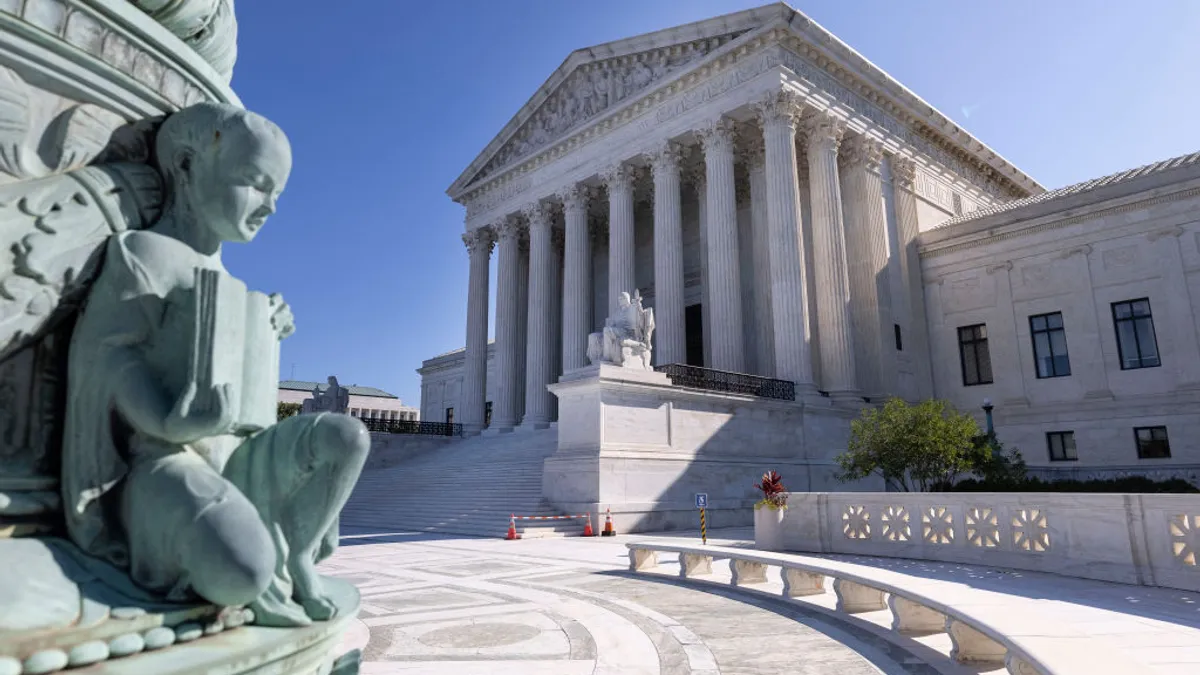The U.S. Supreme Court is poised to decide the future of the E-rate program, as the justices have agreed to review two key cases that address the funding mechanism for the Federal Communications Commission's Universal Service Fund.
The Supreme Court will review the 5th U.S. Circuit Court of Appeals’ ruling in July striking down the funding mechanism for the Universal Service Fund as unconstitutional. E-rate, which provides federal funds to help schools and libraries afford broadband services, currently operates under the Universal Service Fund.
The Supreme Court will consolidate two similar cases — FCC v. Consumers’ Research and Schools, Health and Libraries Broadband Coalition v. Consumers’ Research — into one for oral arguments, which are expected to be held in March or April 2025. A decision would then come by the end of the court's term in late June or early July.
A key question in the Consumers’ Research case is whether the FCC improperly delegated its power granted by Congress to a private nonprofit company — the Universal Service Administrative Co. — to administer the Universal Service Fund following the enactment of the Telecommunications Act of 1996.
Challenging the nondelegation doctrine
The Supreme Court will determine if Congress and the FCC violated the Constitution’s nondelegation doctrine, which is based on the separation of powers between the three branches of government. However, the nondelegation doctrine’s requirement of complete separation of all three branches of power is still up for debate in courts.
The Supreme Court picked up both cases challenging Consumers’ Research given the split decision in the U.S. Court of Appeals on the funding mechanism for the Universal Service Fund. Consumers’ Research lost both cases in the 6th and 11th Circuits, but the 5th Circuit ruled 9-7 in its favor.
In granting certiorari to the case, the justices specifically directed the parties to argue whether the case is moot given that the plaintiffs did not seek preliminary relief from the 5th Circuit.
On Friday, FCC Chair Jessica Rosenworcel said in a statement that she is “pleased” the justices will review the 5th Circuit Court’s “misguided decision.” The Biden administration in September asked the high court to take the case.
“For decades, there has been broad, bipartisan support for the Universal Service Fund and the FCC programs that help communications reach the most rural and least-connected households in the United States, as well as hospitals, schools, and libraries nationwide,” Rosenworcel said. “I am hopeful that the Supreme Court will overturn the decision that put this vital system at risk."
Meanwhile, in a May brief, Consumers’ Research, a conservative nonprofit organization that aims to challenge “woke” companies, said the Supreme Court should revisit the modern interpretation of the nondelegation doctrine.
“If nondelegation means anything, it prohibits Congress from handing an ‘independent’ agency the power to raise billions of dollars in taxes from the general public, based only on vague statutory ‘principles’ that are ‘aspirational only,’” Consumers’ Research wrote. “Congress passed the buck to the FCC, which then passed it to the private USAC. … The buck should stop here.”
A future without E-rate?
The Schools, Health and Libraries Broadband Coalition, or the SHLB Coalition, is a nonprofit organization advocating for equitable broadband access. The group filed its own challenge against Consumers’ Research raising the same issues as the FCC in the U.S. Court of Appeals, said Andrew Jay Schwartzman, senior counselor for the Benton Institute for Broadband & Society.
The SHLB Coalition released a cautiously optimistic statement on the Supreme Court’s decision to hear the case.
“We are further encouraged by the Supreme Court’s request that parties brief on the question of whether the Consumer’s Research challenge is moot," the group said. "We look forward to continuing to support the constitutionality of the USF.”
Most schools receive E-rate funds to pay for broadband services, said John Windhausen, SHLB Coalition executive director. Should the Supreme Court uphold the 5th Circuit’s decision, it would lead to “chaos” for schools, as K-12 leaders would have to drastically reevaluate their budgets, he said.
Under that scenario, it’s likely E-rate wouldn’t end the next day. Rather, it would take a few months, Schwartzman said. Additionally, if the Supreme Court strikes down the Universal Service Fund, Congress would have to pass legislation “very quickly” to replace the E-rate program, which has bipartisan support, he noted.
“It would cause a tremendous amount of disruption, but in the short-term,” Schwartzman said.
Gina Spade, a telecommunications lawyer and founder of Broadband Legal Strategies, said it’s premature to prepare for the end of the E-rate program and that “no one should panic” that the Supreme Court is hearing this case.
While there’s no certainty that the Supreme Court will side with the FCC and SHLB Coalition, Spade said, there have been several cases last term in which the court overturned the 5th Circuit’s decision. “That could be the same case here.”
As of now, however, schools can and should still apply for E-rate dollars for 2025, she said.
At the same time, school leaders “might want to start talking to their representatives in Congress to make sure they understand the value of the program, what it means to them, what the E-rate program allows them to provide for students,” Spade said. “So that if the worst comes to pass, then they will have already done some of that education.”







 Dive Awards
Dive Awards










